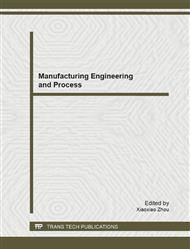[1]
Xian-yu Meng, Xiao-juan Ban, Shu-jun Zhang, etc . Design of Multi-Perception System Model for Artificial Fish in Virtual Environment. Beijing: 2006 IMACS. 2006. 2109-2113.
DOI: 10.1109/indin.2006.275772
Google Scholar
[2]
Xiaoyuan Tu.Artificial animals for computer animation: biomechanics, Iocomotion, perception and behavior[D].ACM Outstanding Ph.D Dissertation Book Series.Springer Verlag,1999.
Google Scholar
[3]
Liu J. Autonomous Agents and Multi-agent Systems: Explorations in Learning, Self-organization, and Adaptive Computation. Singapore: World Scientific, 2001.
DOI: 10.1142/4399
Google Scholar
[4]
Jennings N R, Sycara K, Wooldridge M J. A roadmap of agent research and development. Journal of Autonomous Agents and Multi-Agent Systems, 1998, 1(1):275-306.
DOI: 10.1023/a:1010090405266
Google Scholar
[5]
Daoping Jiang, Xiaojuan Ban, Yixin Yin, Xiangsong Meng. Simulating the Individual Behavior of Fish in Group for Computer Animation, Proceedings of the International Conference on Sensing, Computing and Automation. Chongqing, China, 2006: 1193-1197.
Google Scholar
[6]
Xian-yu Meng, Yan-rong Xue, Xiao-juan Ban. Artificial fish perception fusion model research in the virtual environment.[J] The computer application research.Vol26. No3. ,2009(3):1160-1162
Google Scholar
[7]
Hawkins A.D.,1973. The sensitivity of fish to sounds. Oceanogr. Mar.Biol.Ann.Rev., 11,291—340.
Google Scholar
[8]
Xiaoyuan Tu, Demerit Terzopoulos. Artificial Fishes: Physics, Locomotion, Perception, Behavior. Proc. of ACM SIGGRAPH'94, Orlando, FL, in ACM Computer Graphics Proceedings, 1994:43-50.
DOI: 10.1145/192161.192170
Google Scholar
[9]
Ke Zhang, Yun-jia Wang. Based on bayesian network of coal and gas outburst prediction research. Jiangsu.(2007)
Google Scholar
[10]
Mao-cheng Rong, Peng Yang. The auditory localization of mobile robot technology research. Robot technology and application. 2009.
Google Scholar
[11]
Xian-yu Meng, Xiao-yang He, Yan-rong Xue, Feng-hua Li. Design of Tasting Perception System of Artificial Fish Based on Fuzzy Neural Network. ICNC2009, Tianjin:2009:187-191.
DOI: 10.1109/icnc.2009.555
Google Scholar


